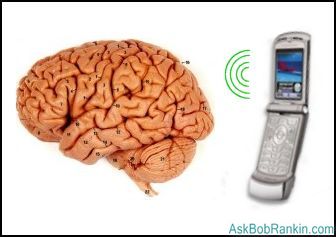
What do brain surgeons know about cellphone safety that the rest of us don’t?
Last week, three prominent neurosurgeons told the CNN interviewer Larry King that they did not hold cellphones next to their ears. “I think the safe practice,†said Dr. Keith Black, a surgeon at Cedars-Sinai Medical Center in Los Angeles, “is to use an earpiece so you keep the microwave antenna away from your brain.â€ÂÂ
Dr. Vini Khurana, an associate professor of neurosurgery at the Australian National University who is an outspoken critic of cellphones, said: “I use it on the speaker-phone mode. I do not hold it to my ear.†And CNN’s chief medical correspondent, Dr. Sanjay Gupta, a neurosurgeon at Emory University Hospital, said that like Dr. Black he used an earpiece.
Along with Senator Edward M. Kennedy’s recent diagnosis of a glioma, a type of tumor that critics have long associated with cellphone use, the doctors’ remarks have helped reignite a long-simmering debate about cellphones and cancer.
That supposed link has been largely dismissed by many experts, including the American Cancer Society. The theory that cellphones cause brain tumors “defies credulity,†said Dr. Eugene Flamm, chairman of neurosurgery at Montefiore Medical Center.
According to the Food and Drug Administration, three large epidemiology studies since 2000 have shown no harmful effects. CTIA  the Wireless Association, the leading industry trade group, said in a statement, “The overwhelming majority of studies that have been published in scientific journals around the globe show that wireless phones do not pose a health risk.â€ÂÂ
The F.D.A. notes, however, that the average period of phone use in the studies it cites was about three years, so the research doesn’t answer questions about long-term exposures. Critics say many studies are flawed for that reason, and also because they do not distinguish between casual and heavy use.
Cellphones emit non-ionizing radiation, waves of energy that are too weak to break chemical bonds or to set off the DNA damage known to cause cancer. There is no known biological mechanism to explain how non-ionizing radiation might lead to cancer.
But researchers who have raised concerns say that just because science can’t explain the mechanism doesn’t mean one doesn’t exist. Concerns have focused on the heat generated by cellphones and the fact that the radio frequencies are absorbed mostly by the head and neck. In recent studies that suggest a risk, the tumors tend to occur on the same side of the head where the patient typically holds the phone.
Like most research on the subject, the studies are observational, showing only an association between cellphone use and cancer, not a causal relationship. The most important of these studies is called Interphone, a vast research effort in 13 countries, including Canada, Israel and several in Europe.
[From the NYT]
=
c